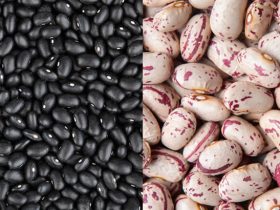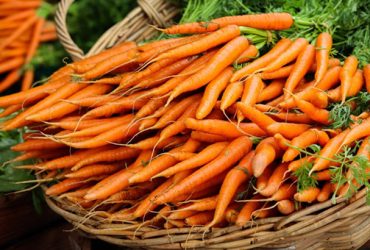Picture this — you’re preparing a fancy dinner for a special occasion and want to impress your guests. While you can absolutely go for staple meats like chicken or beef for your main course, why not be a bit more adventurous and try making lamb?
This delicious, tender meat has a unique flavor that will blow your taste buds away. But the trick is, you have to prepare it correctly. So, if you’re set on some lamb chops for your next meal, here are all your prep tips answered — how to cook it, is it safe, and most importantly, can you eat lamb medium-rare?
Can You Eat Lamb Medium-Rare?
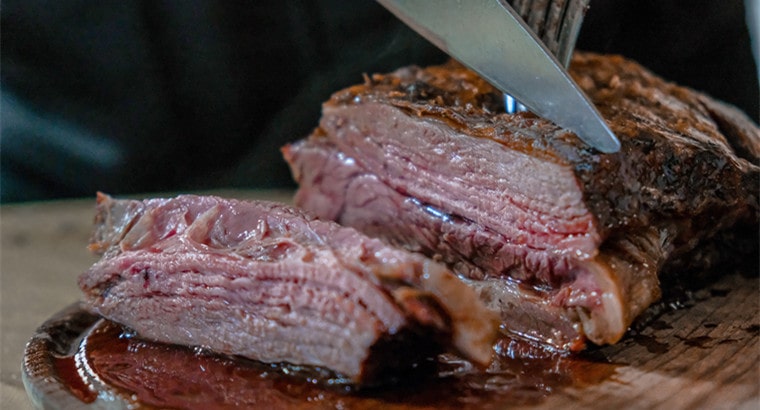
You don’t have to be an expert cook to know that eating raw meat is a dangerous game. The animals we use for food carry countless pathogens that can seriously harm your health.
For example, raw beef often plays host to E. coli, a naturally occurring bacteria that can cause kidney failure and toxic shock. Raw chicken is often teeming with salmonella, a dangerous gut bacteria that can cause severe food poisoning. Lamb can also be a hotbed for both, as well as a plethora of other unpleasant contaminants.
But, the good news is that most of these pathogens live on the surface of raw meat. Therefore, searing your cut on both sides should be enough to make it safe. For lamb, this means cooking the meat until it becomes medium-rare.
Medium-rare is the most common type of doneness for all types of meat. It gives the meat a crispy, brown crust while leaving the inside pink and juicy. If you’re cooking your cut on the stove, that means frying it for 6‒7 minutes until it reaches an internal temperature of 145°F.
If you’re preparing the lamb in the oven, you’ll have to roast the cut for around 25 minutes. Start cooking it at 450°F for the first fifteen minutes, and then reduce the temperature to 350°F to finish it off.
However, keep in mind that the cooking time and temperature will heavily depend on the type of meat you use. For example, smaller, leaner cuts like leg or loin require a shorter cook time to become medium-rare. On the other hand, larger, fattier meats like breast are better when slow-cooked because the fat has enough time to melt and tenderize the meat.
Is Lamb Better Medium or Medium-Rare?
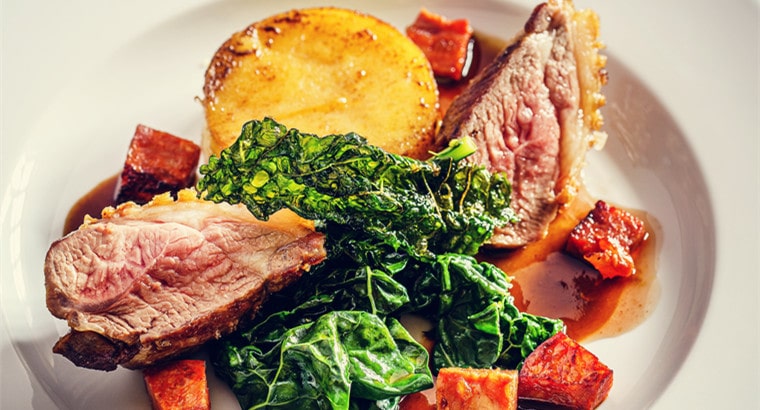
As established, cooking your lamb until it’s medium-rare will make it safe to eat. But will it make it tasty? If you’ve never eaten this particular type of meat, then you may wonder if cooking it until it’s well-done will improve its flavor.
The answer is that it all depends on personal preferences. For example, most Americans prefer their lamb medium-rare. This level of doneness makes the meat crispy on the outside while leaving it with a tender, pink center, which is perfect for barbecued lamb legs.
On the other hand, French chefs like leaving their lamb extra-rare, especially in oven-roasted dishes like gigot d’agneau pleureur, which translates to weeping leg of lamb roast. Greeks take the opposite approach and cook their lamb until it’s so well-done it’s practically falling off the bone. This method works well for lamb souvlaki or recipes that use marinated meat, like broiled lamb gyros.
But, regardless of what professional cooks recommend, you should always put your preferences first. If you like your meat medium-rare, then make it medium-rare.
Alternatively, if you’re a fan of well-done meats, then experiment with recipes that ask for well-done meat. There are plenty of ways to cook lamb so it tastes good to you and your loved ones!
Risks of Eating Rare Lamb

It happens to everyone from time to time. You ate a cut of meat that you later found out was just a touch too raw to be considered safe. Now what? The first step is to not panic.
Getting sick depends on where you got the meat from and how it was stored. Sealing meat in plastic packages and flash-freezing it helps keep it fresher for longer. It also inhibits the development of harmful bacteria. Therefore, if the rare lamb chop you ate was properly sealed and stored, then you shouldn’t be concerned.
However, if you start feeling sick after consuming the meat, it may be time to contact your doctor. Raw lamb carries dangerous pathogens that can cause pretty severe food poisoning. Some of the most common tell-tale signs of a foodborne illness include:
• Nausea
• Diarrhea
• Vomiting
• Stomach cramps
• Stomach pain
• Fever
These symptoms can start 1‒12 days after eating the contaminated meat. With rest and plenty of hydration, they usually go away on their own after a week or less. However, in severe cases, food poisoning can cause paralysis, neurological issues, and even death.
Therefore, it’s vital to contact your doctor if you get sick to stop the symptoms from getting worse.
How to Cook Lamb Safely: 3 Tips
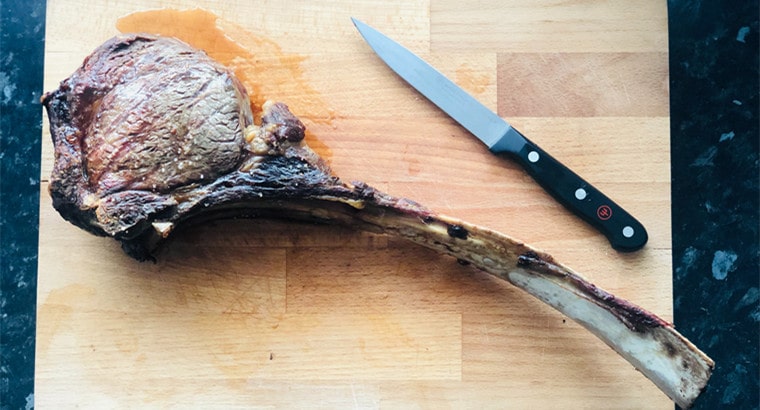
In summary, enjoying a cut of medium-rare lamb is perfectly safe — however, this only applies if you’ve prepped it correctly. So, next time you’re making a delicious lamb dinner, here are three basic cooking tips you should keep in mind.
1. Buy Lamb Meat From Trusted Sources
Like any other food item, it’s important to get your meat from trusted vendors. A lot of people prefer to buy cuts of meat from the local butcher. While this meat is more expensive, it’s also fresher and of higher quality.
Plus, many people say it’s much safer because they believe organic farmers won’t feed their animals harmful antibiotics and GMO foods.
However, that doesn’t mean supermarket meat is inherently dangerous. The USDA strictly regulates all meat products in supermarkets, making sure they’re free of any harmful bacteria or toxins.
So while it may not be premium quality, supermarket meat is still quite safe for consumption—especially if you want to eat a good meal on a tighter budget.
2. Wash the Cut Before Cooking It
You, as the consumer, play a big role in keeping your meat safe. Therefore, you should do everything you can to properly prepare and cook your food. This includes storing the meat you’ve bought in the freezer until you mean to use it. Before you start cooking, make sure to wash your hands and any utensils you’ll need for food preparation.
Cut your meat on a clean, plastic cutting board. Avoid using wooden boards because wood can easily absorb meat juices and allow bacteria to fester. This can lead to cross-contamination if you proceed to use the same cutting board to prepare other produce.
3. Use a Thermometer to Check Doneness
The final step is to cook the meat properly. Since everyone’s oven is different, the exact cook time for you may differ from what a particular recipe recommends. So, to avoid undercooking or overcooking your meat, invest in a food thermometer. This nifty gadget is a cheap yet incredibly useful way to make sure your lamb dish turns out exactly right!



